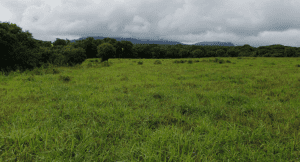
A review of the significant criteria outlined in HRS Chapter 343 and HAR Section 11-200.1 on the development of the Anahola Homestead Settlement has been determined to not result in significant adverse effects on the natural or human environment.
The Hawaiian Homes Commission (HHC) evaluated the final EA and issued a FONSI determination at its May 2021 HHC meeting. The final EA and FONSI were published in the Office of Environmental Quality Control’s June 23 Environmental Notice.
The Anahola Homestead Settlement Plan focuses on the development of a 462-acre Kuleana Homestead on the windward side of Kauaʻi within the traditional ahupuaʻa of Anahola and Kamalomaloʻo that will ultimately be awarded as Kuleana Subsistence Agriculture and Pastoral lots to beneficiaries on the Kauaʻi Island Agriculture and Pastoral Waiting Lists.
Sugar cane and pineapple plantation agriculture previously utilized the land with remnants of infrastructure that serviced the operations still in place. Vegetative overgrowth, largely consisting of albizia trees, dominates the natural environment. In September 2019, HHC approved a Right of Entry Permit to the Green Energy Team to cut down and harvest albizia trees in Anahola. Work to remove the trees and make improvements to the existing roads is ongoing.
The Kuleana Homestead Program is intended to rehabilitate native Hawaiians by providing opportunities for self-sufficiency and self-determination. As such, raw land will be offered to beneficiaries to live on, grow food to sustain their family, and utilize for economic purposes.
Beneficiaries receiving an offer for Kuleana Homestead lots will agree to accept unimproved land in “as-is” condition. The project area is essentially undeveloped. DHHL will only survey and stake lots to determine the metes and bounds description of each Kuleana Homestead lot and prepare an unpaved right-of-way to the awarded lots. Lessees will be responsible for providing their utility and infrastructural needs, such as electrical, water, solid waste and wastewater disposal, and communications. It is also beneficiary responsibility to maintain and upkeep the homestead tract’s rights-of-way, management of wildfire risks, and preservation of significant historical and biological resources.
The pilot Kuleana Homestead Program in Kahikinui, Maui, conceived in the 1990s, faced a learning curve that created challenges that exist today. Among them, beneficiaries have expressed that an issue for lessees awarded these lots was the understanding of the requirement to build on the land and the associated costs. Struggles to receive traditional loans and home insurance without traditional TMKs also provided a roadblock for many awarded these lots. The Anahola Kuleana Homestead Settlement Plan has taken this feedback into consideration to prepare for a more successful settlement, including the issuance of individual TMKs to future lessees.
DHHL Conducted two group beneficiary consultation meetings on the project in August 2019 and in November 2019. A small group meeting with former plantation employees familiar with the plantation water systems in Anahola was also held.
To review the Anahola Homestead Settlement Plan final EA, visit dhhl.hawaii.gov/po/kauai.
